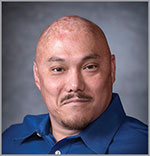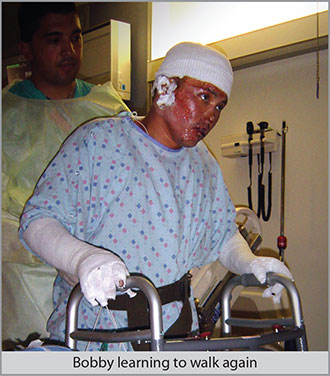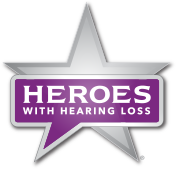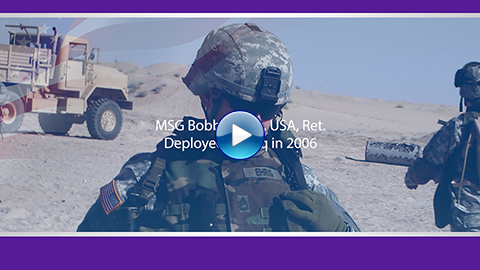Invisible Burns
How MSG Bobby Ehrig’s Determination Keeps Him Smiling
Bobby Ehrig sits in front of a television camera and readies himself for an interview. When the afternoon sun shifts to peek through the curtains and gleam off his bald head, he reaches up and rubs his burned scalp. “If it’s too shiny I can pat it. You ain’t going to hurt my feelings. This is all scar tissue so it doesn’t really do anything other than glare.”
That wry sense of humor has helped Bobby survive an ordeal that most people can’t even fathom. Faced with constant pain, a traumatic brain injury, post-traumatic stress and the inability to sweat – most people would have likely given up years ago. Bobby Ehrig clearly isn’t most people.
On August 21st, 2006 Army Master Sergeant Ehrig was on a recruitment mission at an Iraqi police station in the northwest corner of Ramadi. At 1:30 in the afternoon, a suicide bomber driving a flatbed truck carrying around 100 tanks of propane managed to get within 75 feet of the entry control point. A dead-man switch detonated the propane and decimated everything within an 800-foot radius. Bobby, standing in the middle of the compound, took the brunt of the blast face-first.

It’s easy to see the burns that cover nearly half his body. What isn’t immediately noticeable are the invisible battles that he fights every minute of every day with post traumatic stress disorder and severe hearing loss. “It probably took two years to actually identify that I had a hearing loss,” he says. “I was having multiple surgeries and my pain level was so high other things didn’t matter. I wasn’t worried if people could hear me or if I could hear them.”
Bobby is one of more than 1.5 million veterans with a hearing related injury resulting from their service. While the VA is still the primary avenue for medical and financial assistance, the organization remains challenged by the sheer volume of disability claims awaiting resolution. The amount of time it takes to process the hundreds of thousands of open claims has sometimes resulted in a gap in care for disabled veterans. That gap is especially prominent when it comes to what the Government Accountability Office has called the most commonly documented service connected trauma – hearing loss. As a result, many veterans are constantly searching for solutions on their own.
Filling this gap in hearing loss care with proven, real world solutions is what the Heroes With Hearing Loss® program is all about. Hamilton CapTel®, a nationwide service that provides captions for telephone calls for individuals who experience hearing loss, conceived Heroes With Hearing Loss in response to the epidemic of hearing loss injuries among veterans. The growing list includes men and women who’ve returned from operations in Iraq and Afghanistan, as well as veterans of World War II, Korea and Vietnam.
“Our goal is to start a national dialog with veterans about hearing loss,” said Shari Penner, the program’s national manager. “We want to get people talking and raise awareness about what makes hearing loss among veterans such a unique challenge.”

The Heroes With Hearing Loss program revolves around the premise that veterans share an unshakable bond regardless of age or era of service. Connecting these veterans from ever y generation is critical to ensuring that our nation’s heroes are living well with hearing loss. Sharing their hearing loss challenges and experiences with one another is making a real difference for veterans and their families.
“I think it’s just how we were trained,” says Ehrig. “From a vet to a vet or a vet to a vet family member, there’s a level of trust. It’s the best way of convincing a veteran to get help.”
Bobby’s Journey is just one of many. Fortunately there are solutions available right now to help veterans manage the impact of hearing loss. Help us spread the word by becoming part of the Heroes With Hearing Loss team. The conversation starts here.
 Heroes With Hearing Loss
Heroes With Hearing Loss